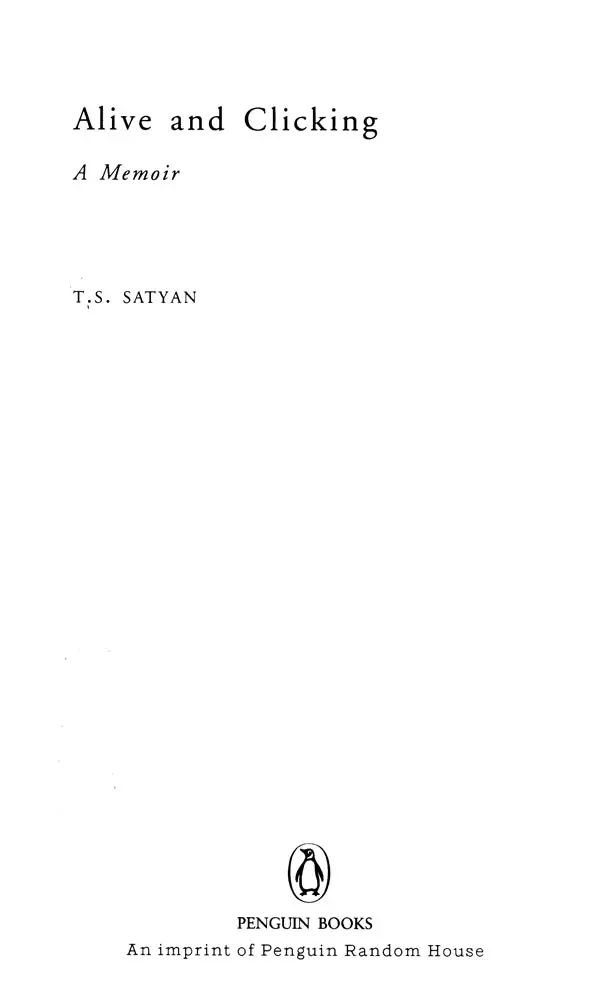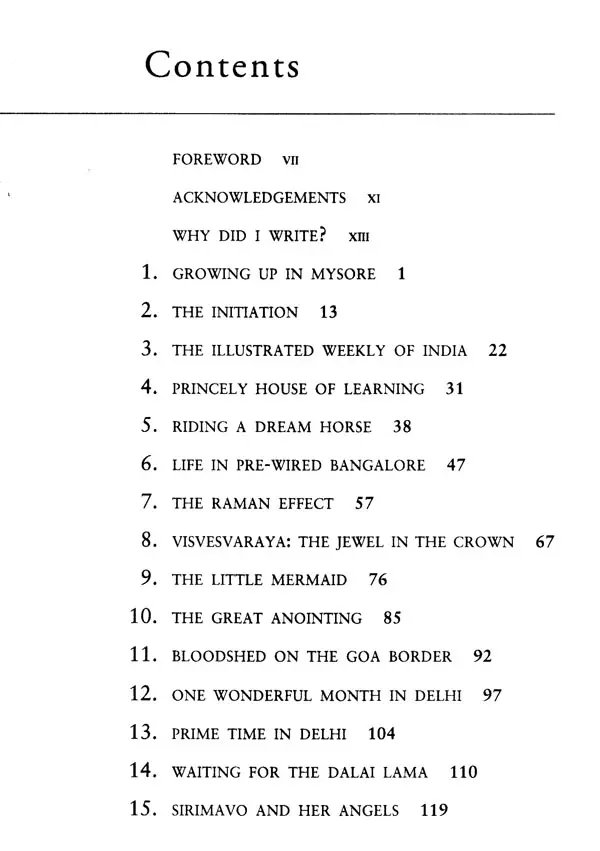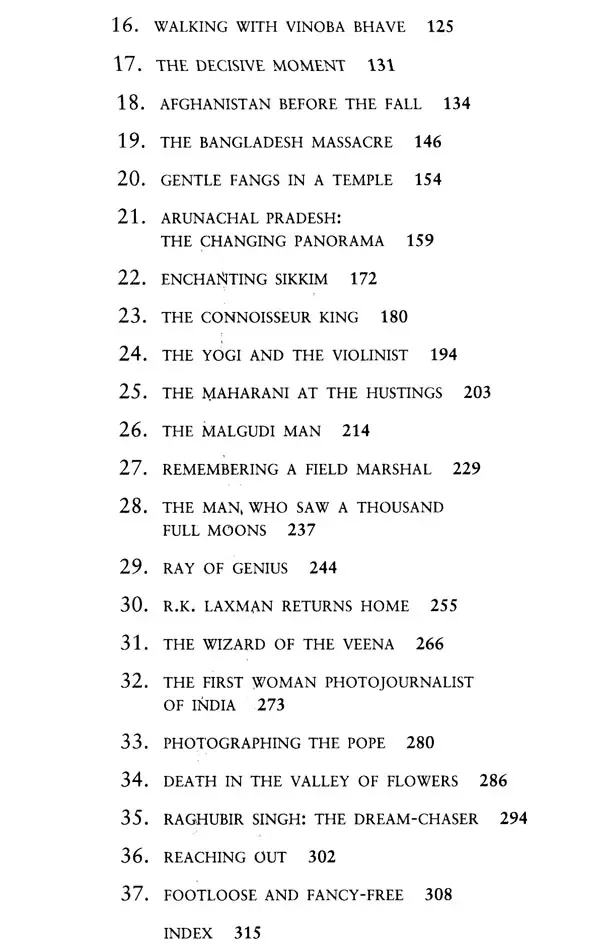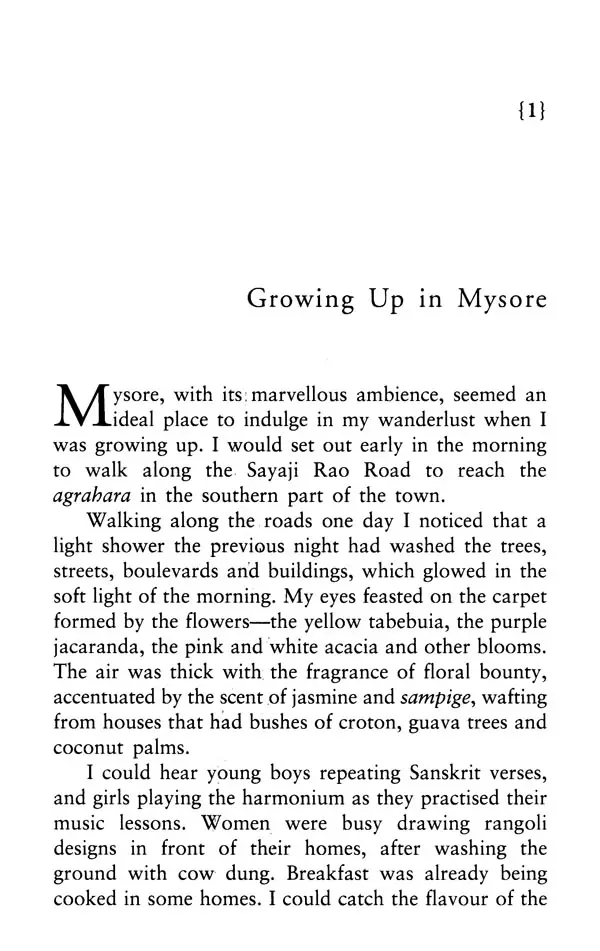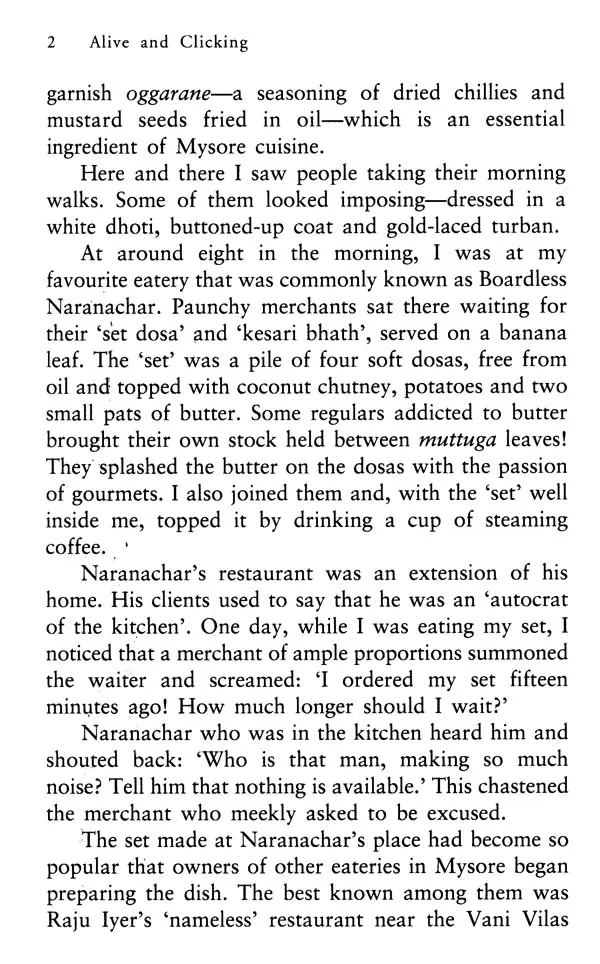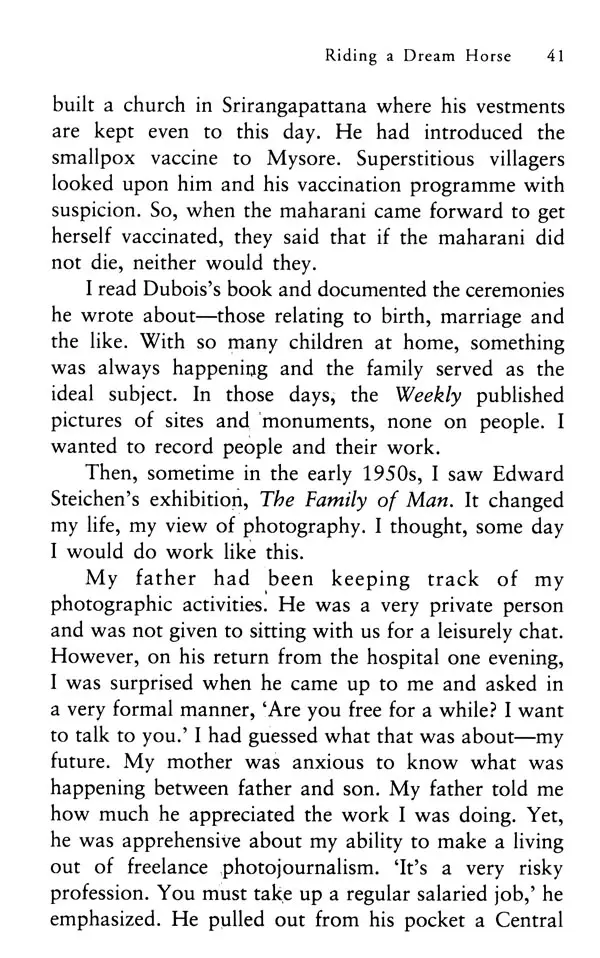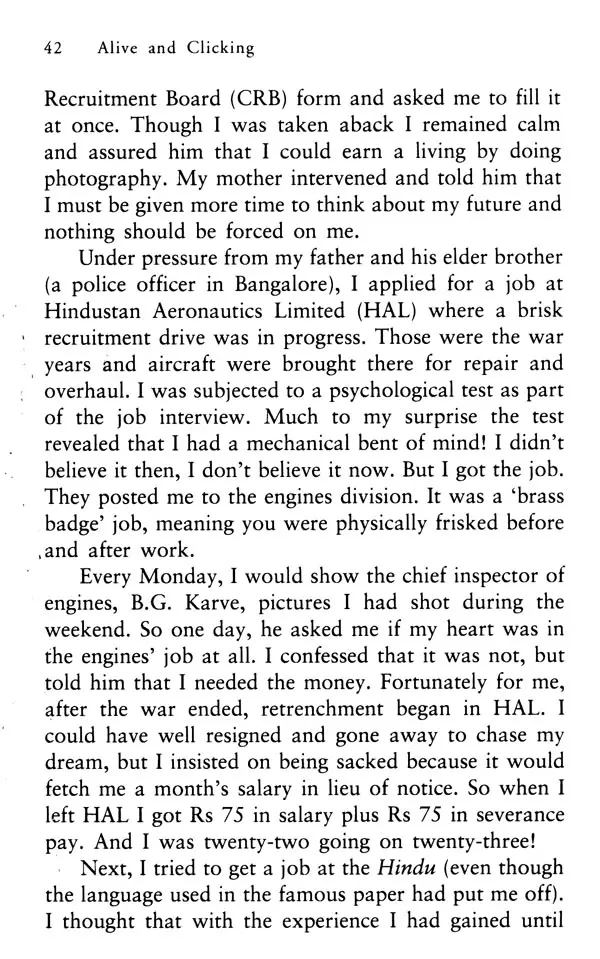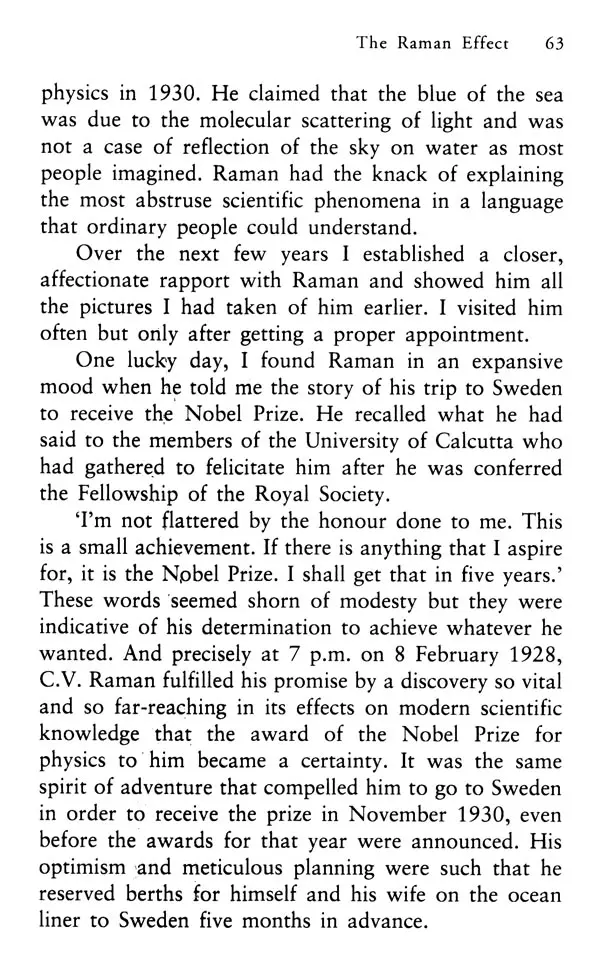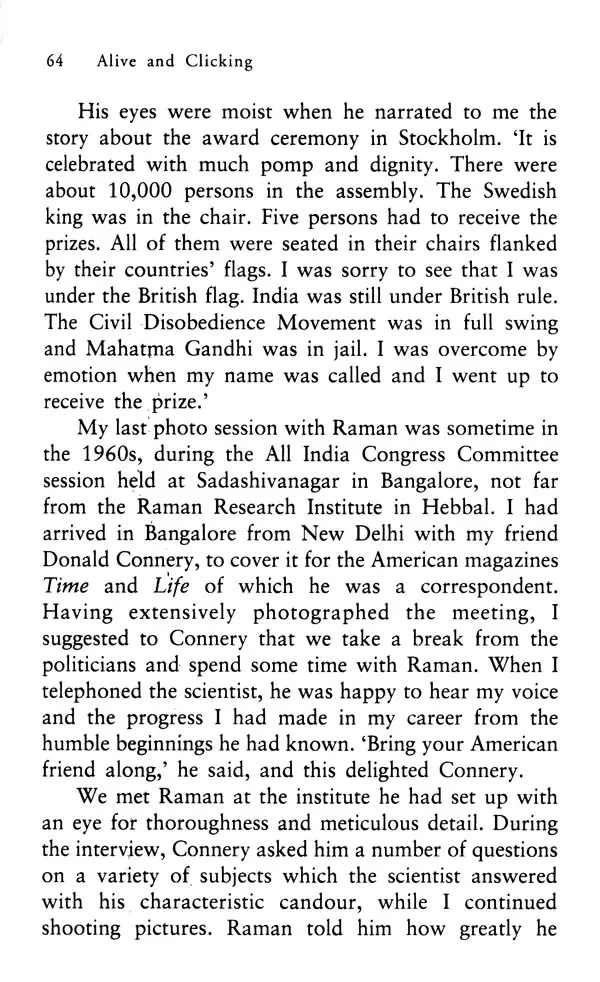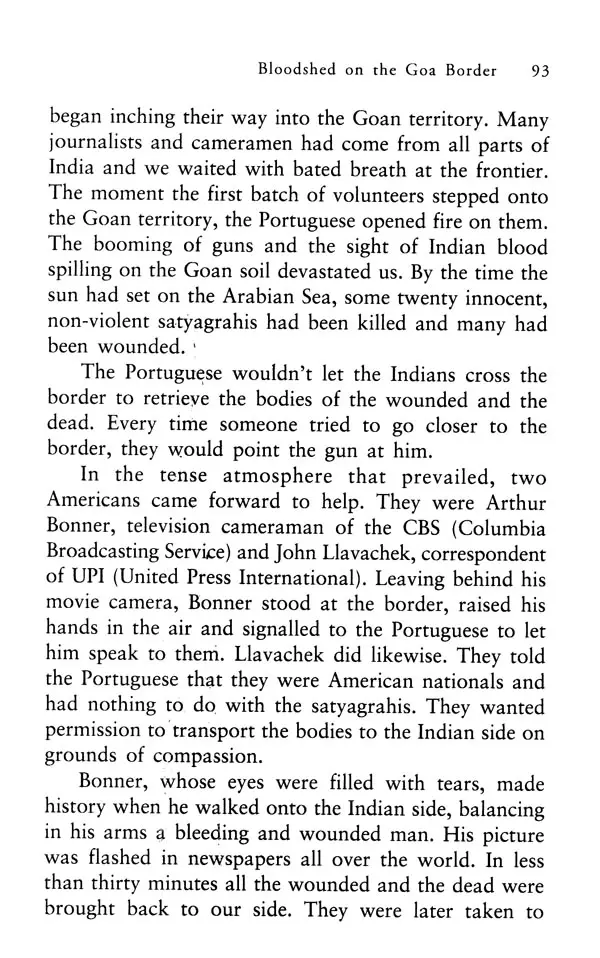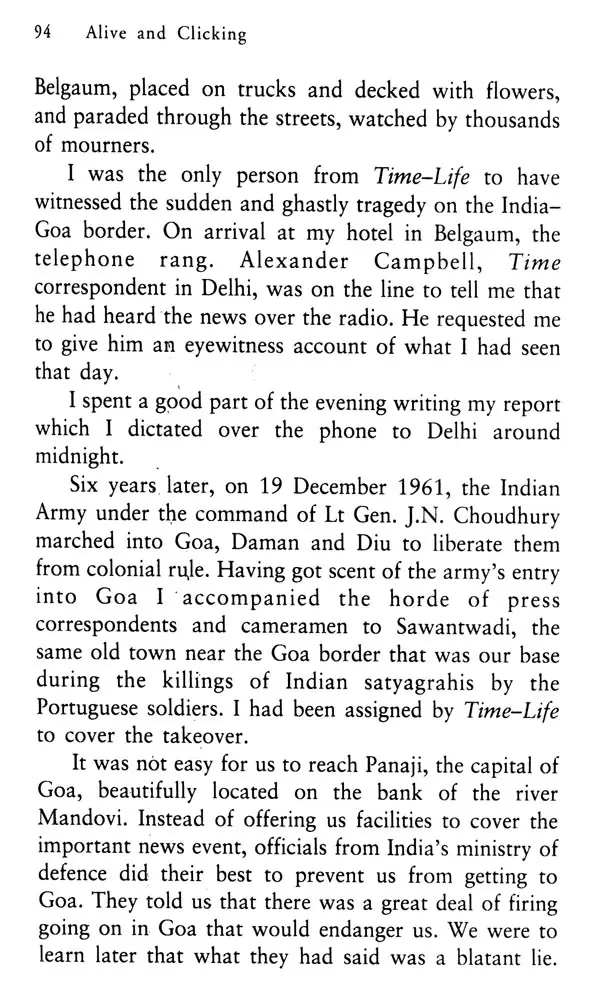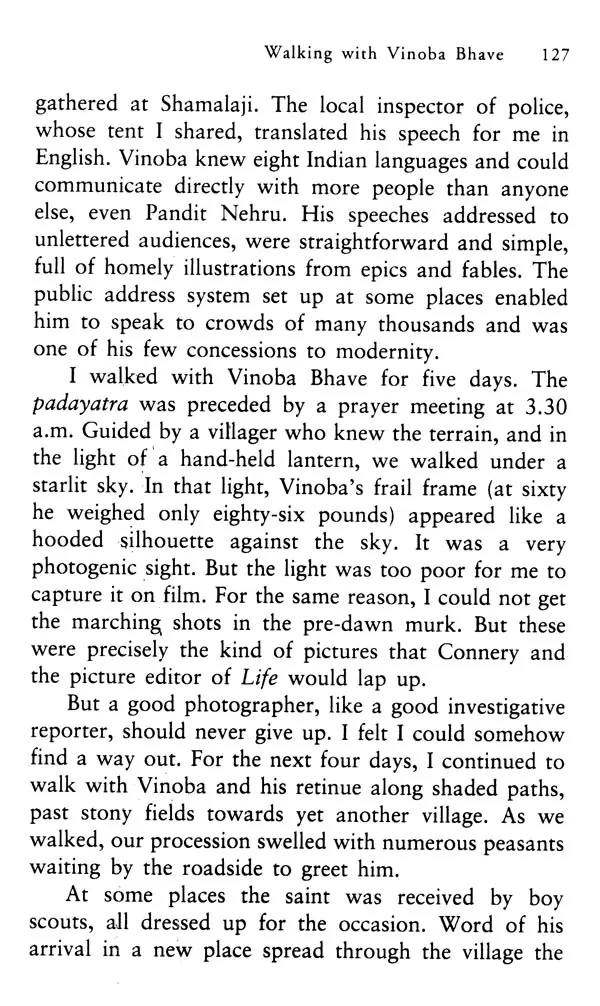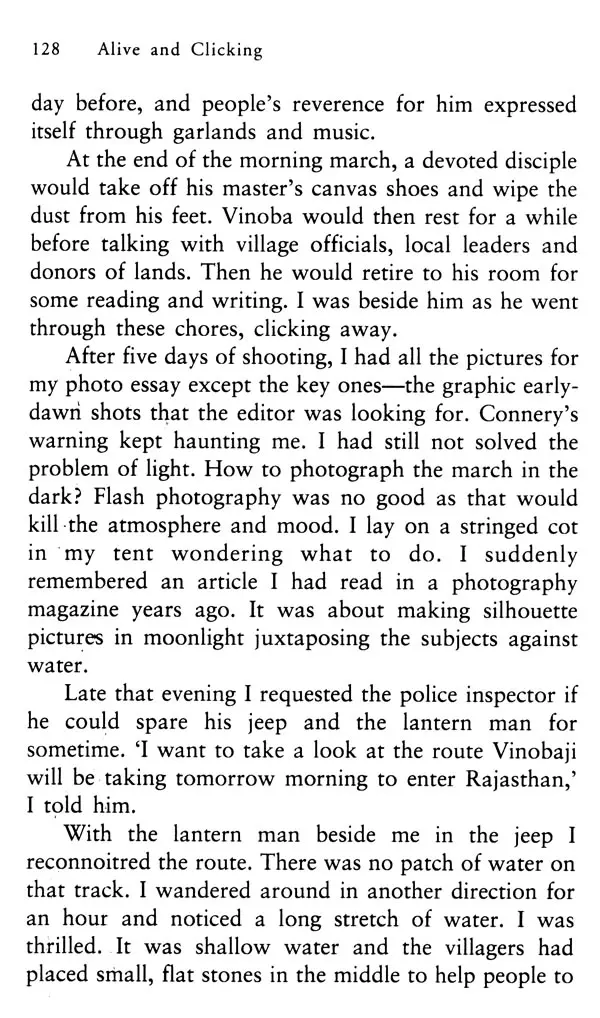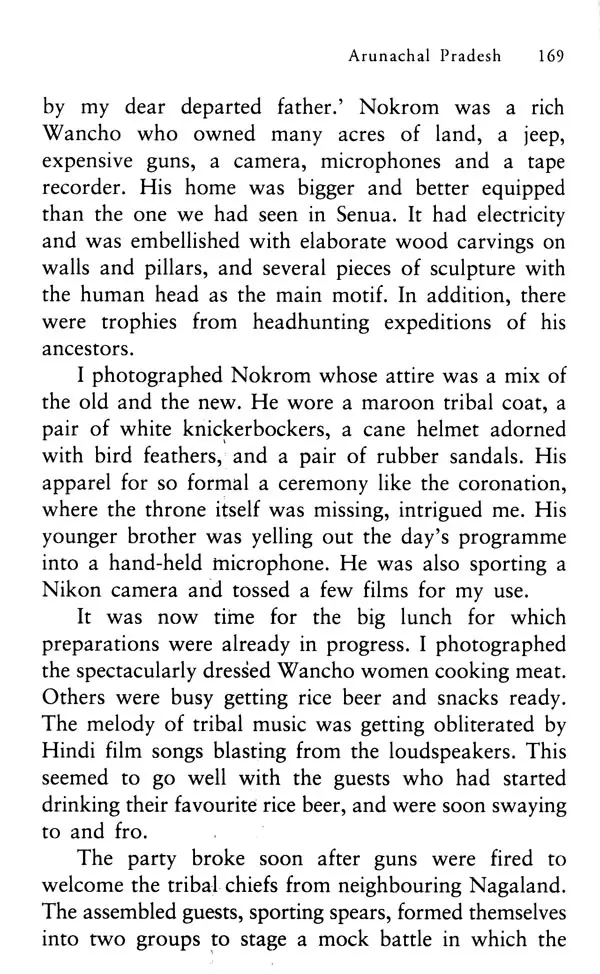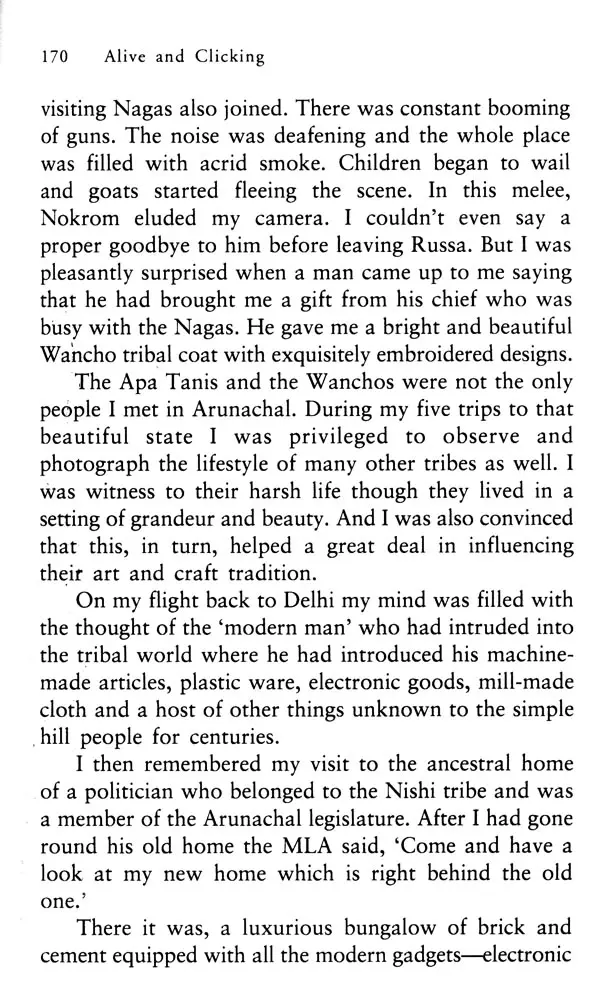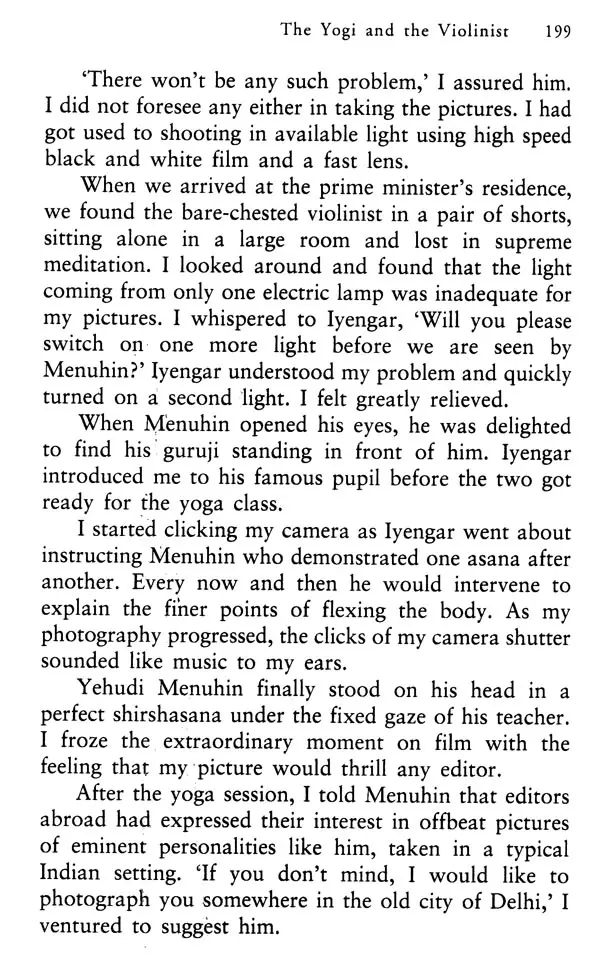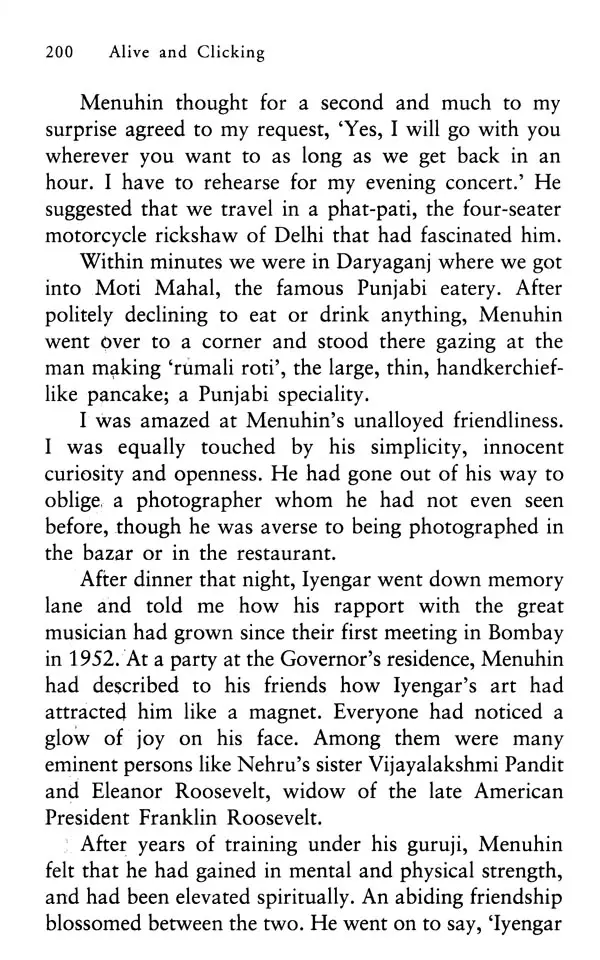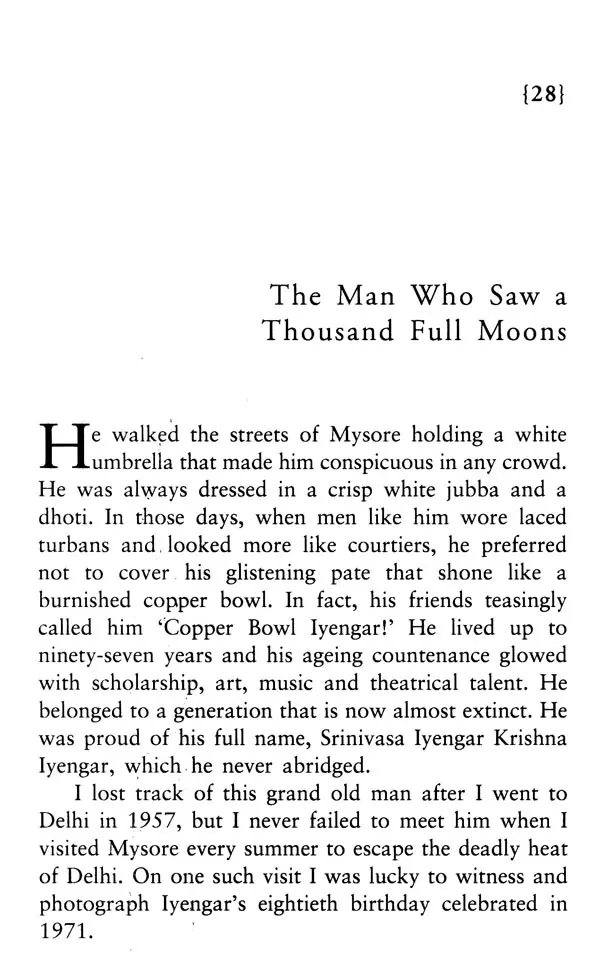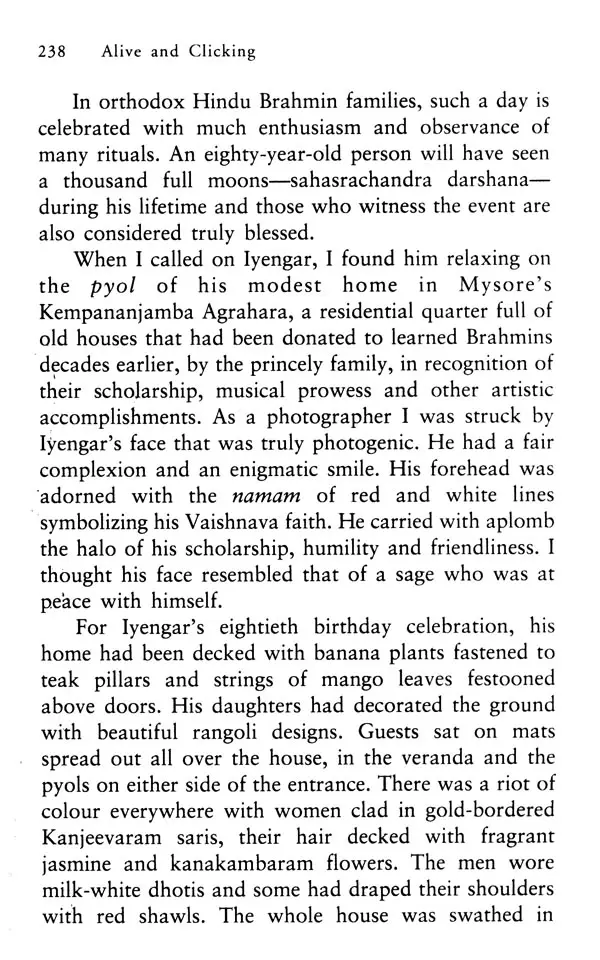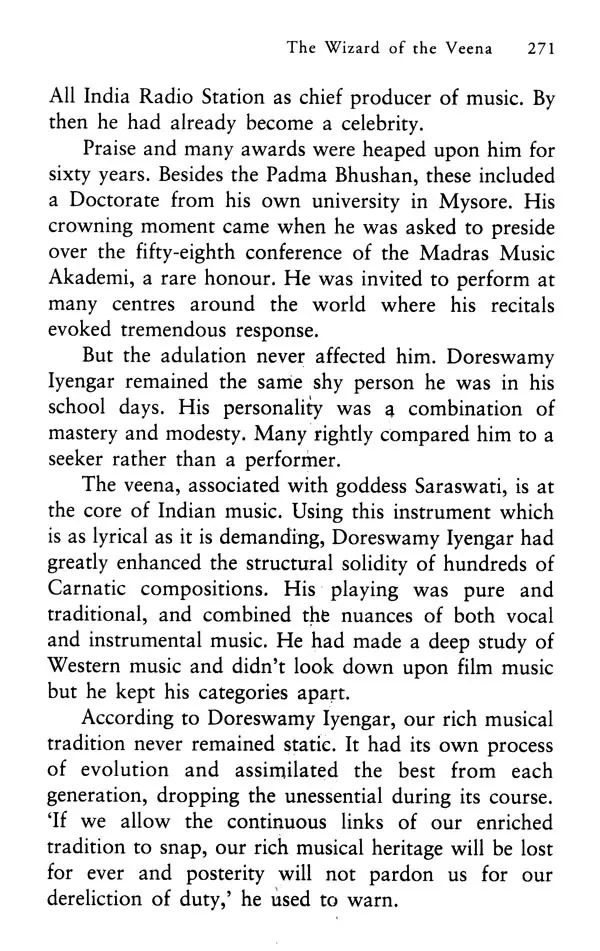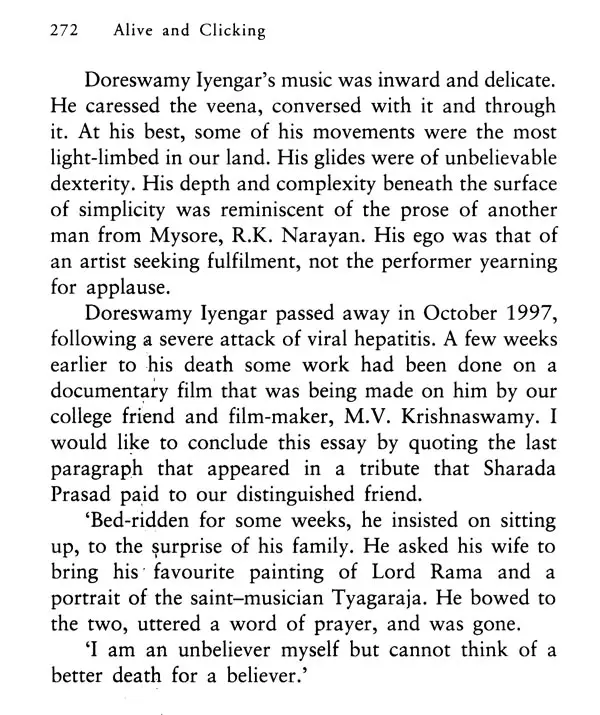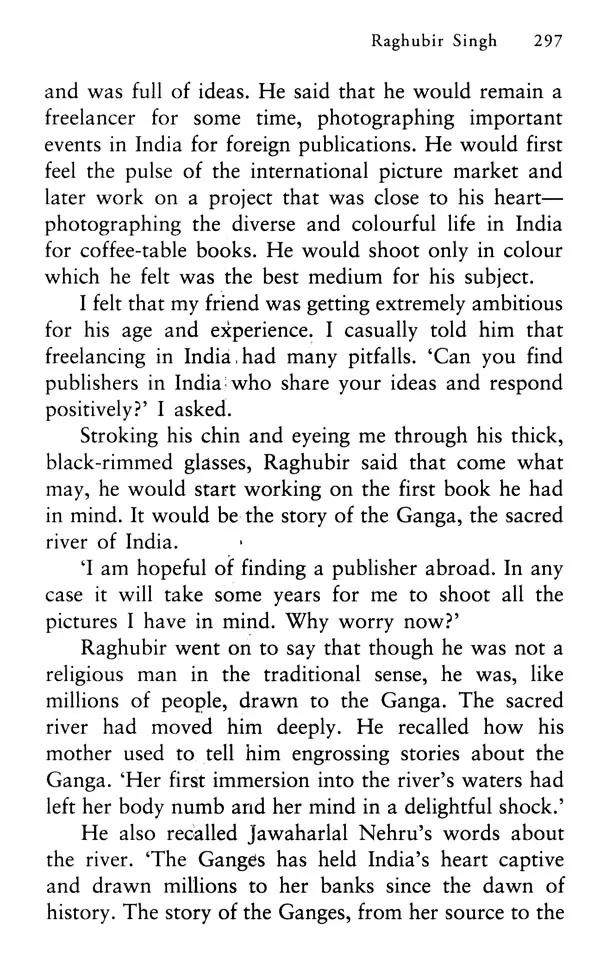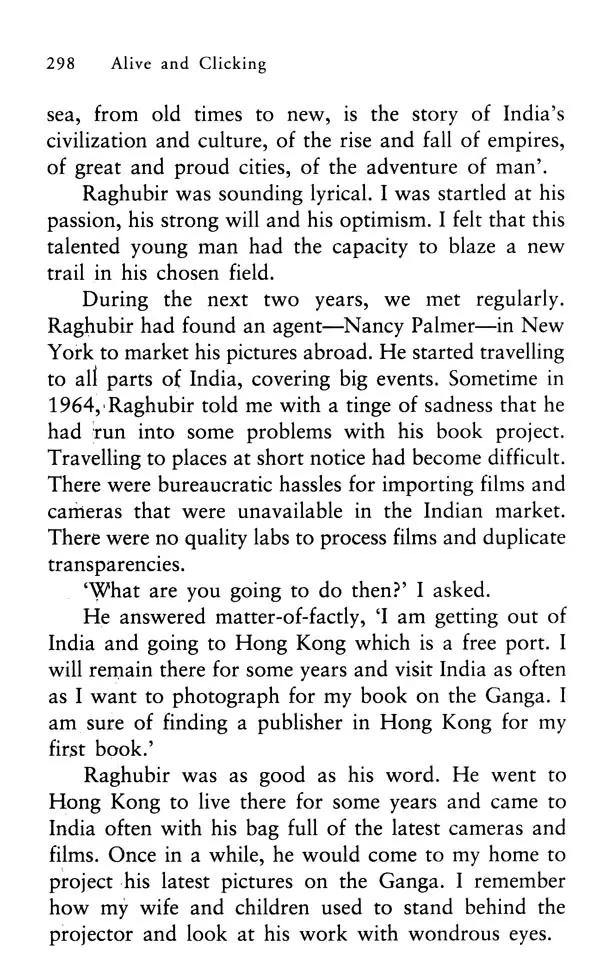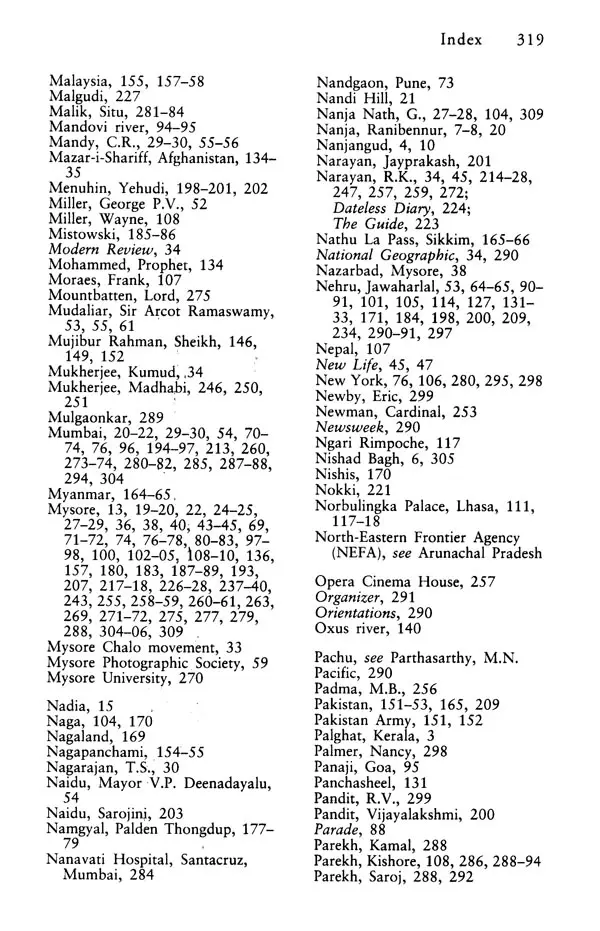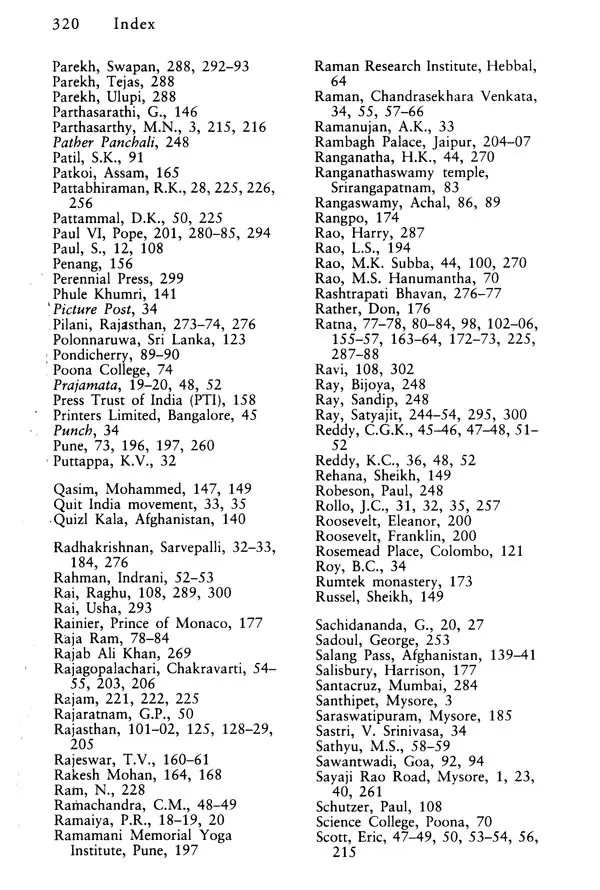
Alive and Clicking- A Memoir
Book Specification
| Item Code: | UAF044 |
| Author: | T.S. Satyan |
| Publisher: | Penguin Random House India Pvt. Ltd. |
| Language: | English |
| Edition: | 2005 |
| ISBN: | 9780143033530 |
| Pages: | 332 |
| Cover: | PAPERBACK |
| Other Details | 8.50 X 5.50 inch |
| Weight | 390 gm |
Book Description
Spanning eighty years of what is perhaps the most eventful century in history, the book recounts the days Satyan spent with luminaries like Nobel Laureate C.V. Raman and virtuoso film-maker Satyajit Ray; the significant moments he captured in the lives of leaders like Jawaharlal Nehru and Pope Paul VI, and his enduring friendships with creative masterminds like R.K. Narayan and R.K. Laxman. It also portrays vividly his experiences as a photographer in places as varied as Sikkim, Afghanistan, Arunachal Pradesh and Malaysia, and describes life-changing events like the massacre of non-violent satyagra his by the Portuguese rulers in Goa and the mayhem that followed the assassination of Mujibur Rahman in Bangladesh.
Like a slow, easy ride in a carriage, Alive and Clicking takes us through the dusty paths of Mysore of the 1930s and 40s to the farthest corners of India and countries beyond, recording for posterity an extraordinary life lived in interesting times.
T.S. Satyan was awarded the prestigious Padma Shri by the government of India. The University of Mysore conferred an honorary Doctor of Literature degree on him.
One was in the state of Baroda, whose great maharaja Sayaji Rao Gaekwad encouraged modern education and worked for the abolition of untouchability (it was he who endowed a travelling scholarship to that gifted boy. from a low-caste home, B.R. Ambedkar). Then there was the state of Mysore, which had the good 'fortune to be ruled by a series of progressive maharajas who recruited still more progressive dewans.
The princely state of Mysore was never a democracy.
Power was tightly controlled by the (generally , overweight) ruler and his (usually Brahmin) advisers. It was undoubtedly an autocracy, but, as autocracies go, . a rather enlightened one. Between them, the maharajas and their dewans started modern industries (including a steel mill), ran efficient railways, built an impressive network of irrigation canals, patronized great musicians and artists, and created and nurtured first-rate colleges.
In its pomp, which ran roughly from 1910 to 1945, the state of Mysore was a very interesting place to grow up in. In those years, if you were young, talented, and ambitious, and if you had the luck to be born in the state, you might go a very long way indeed.
Among the products of this 'Mysore Generation' were R.K. Narayan, the first of the now distinguished line of Indo-Anglican· novelists; B.S. Caravan, the pioneering historian of Indian publishing, R.K. Laxman, one of the greatest cartoonists in the world; M.N. Srinivas, without question India's most eminent social anthropologist; CD. Narasimhaiah, the most celebrated English teacher and critic of his generation; and Doorway Iyengar, arguably the finest veena player of his generation. A little younger than this cohort was A.K. Ramanuja, the poet, folklorist, and translator, who did so much to bring the riches of classical Tamil and Kannada literature to the modern world.
While the fame of these men spread far beyond Mysore, they were all shaped by the town, especially by its culture and its teachers. Most of them studied at the Maharaja's College, an institution known for the high quality of its instruction in the humanities. In the great presidency towns, Madras, Bombay and Calcutta, bright young men flocked to the study of the sciences. But in Mysore it seems the liberal arts were reckoned to be at least as attractive. Certainly, the teachers were top- class. Not least in philosophy, where the faculty included, at various times, A.R. Wadia, M. Hiriyanna, and Sarvepalli Radhakrishnan.
Book's Contents and Sample Pages
